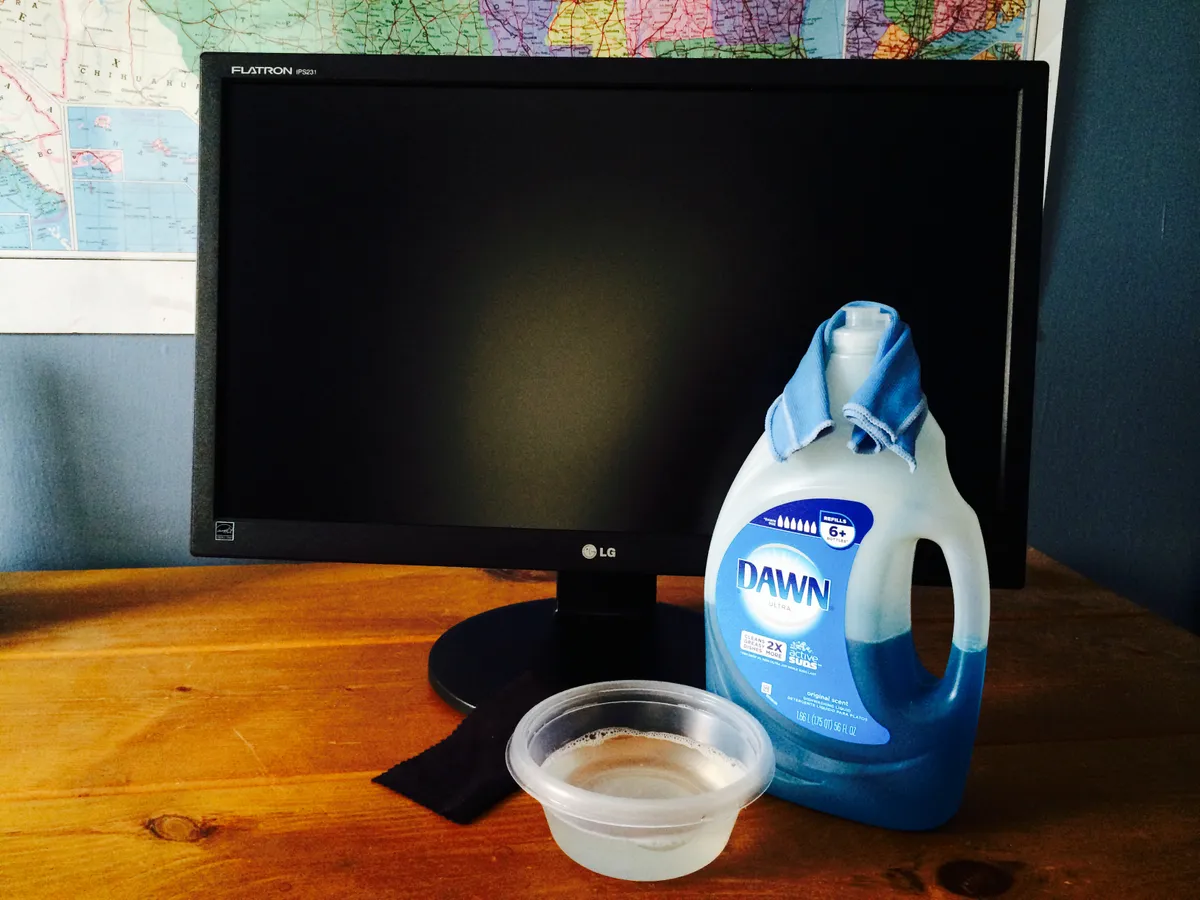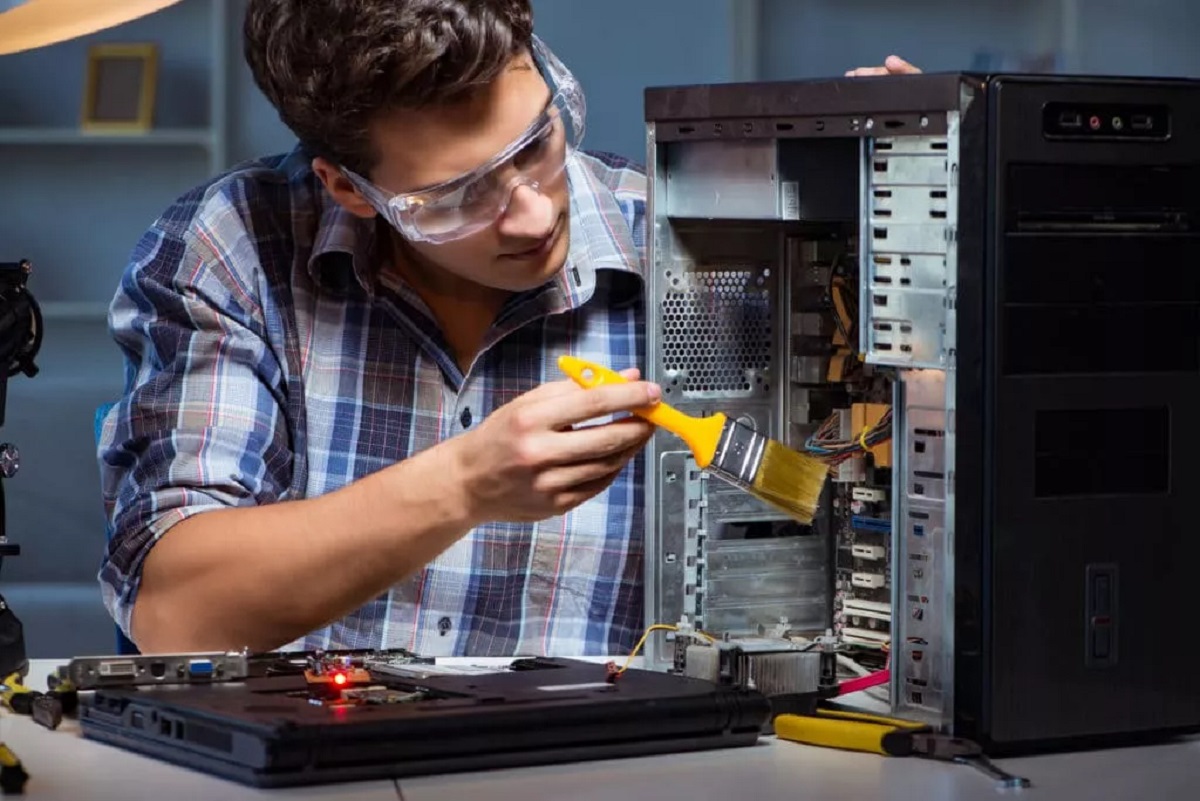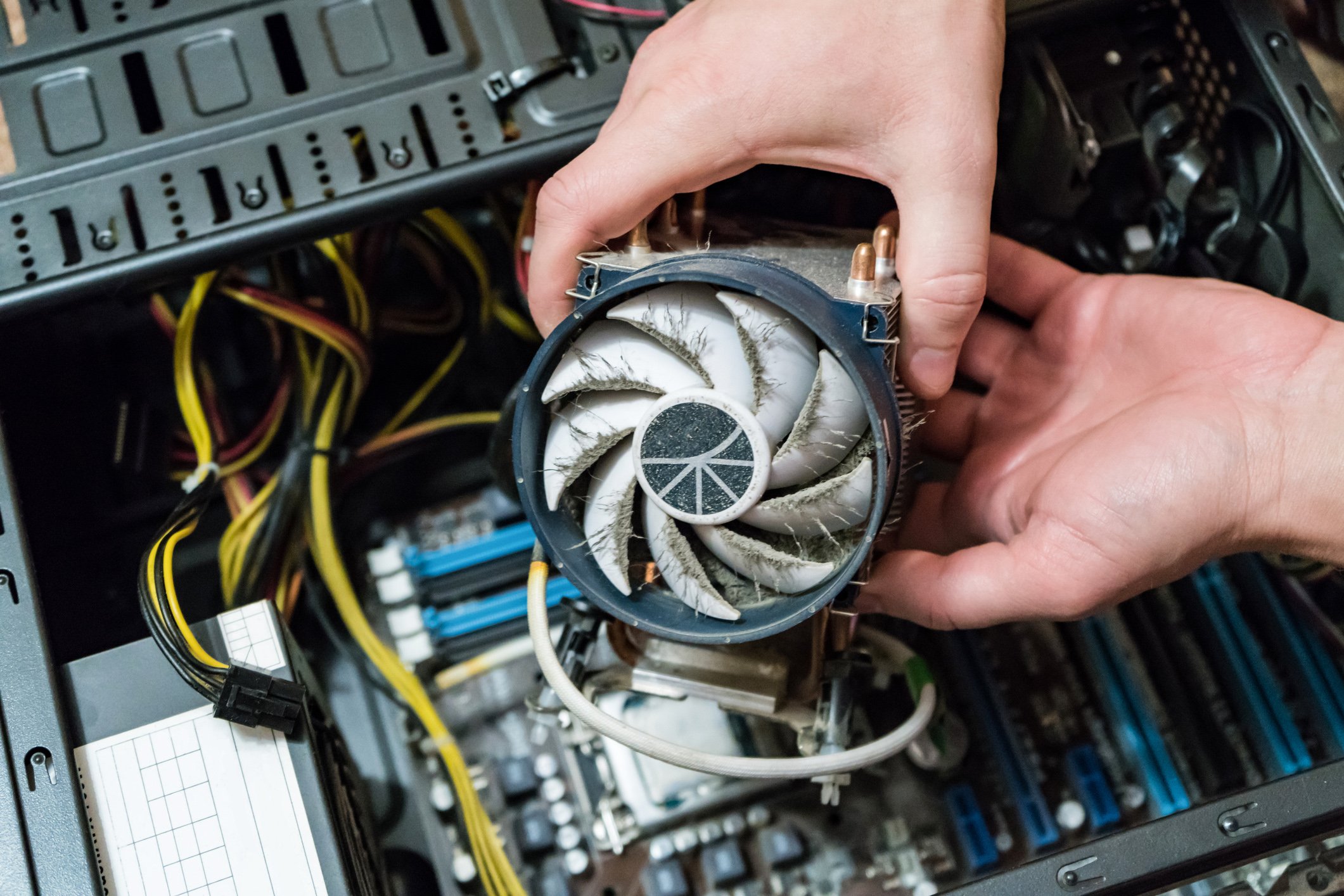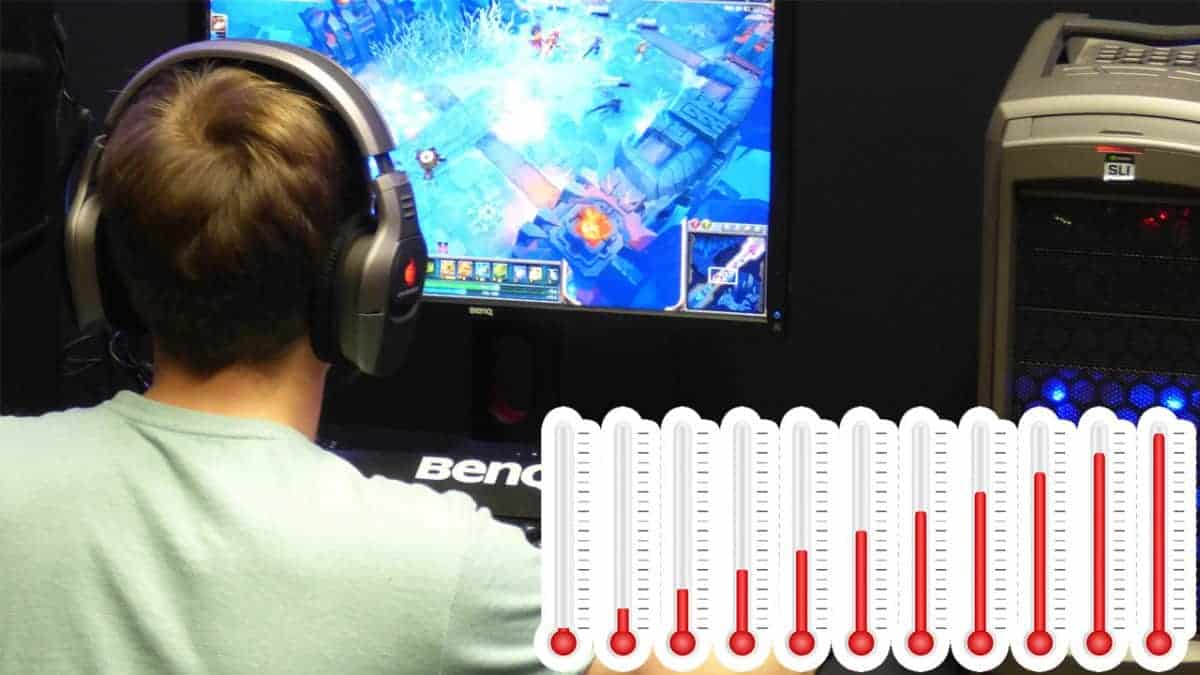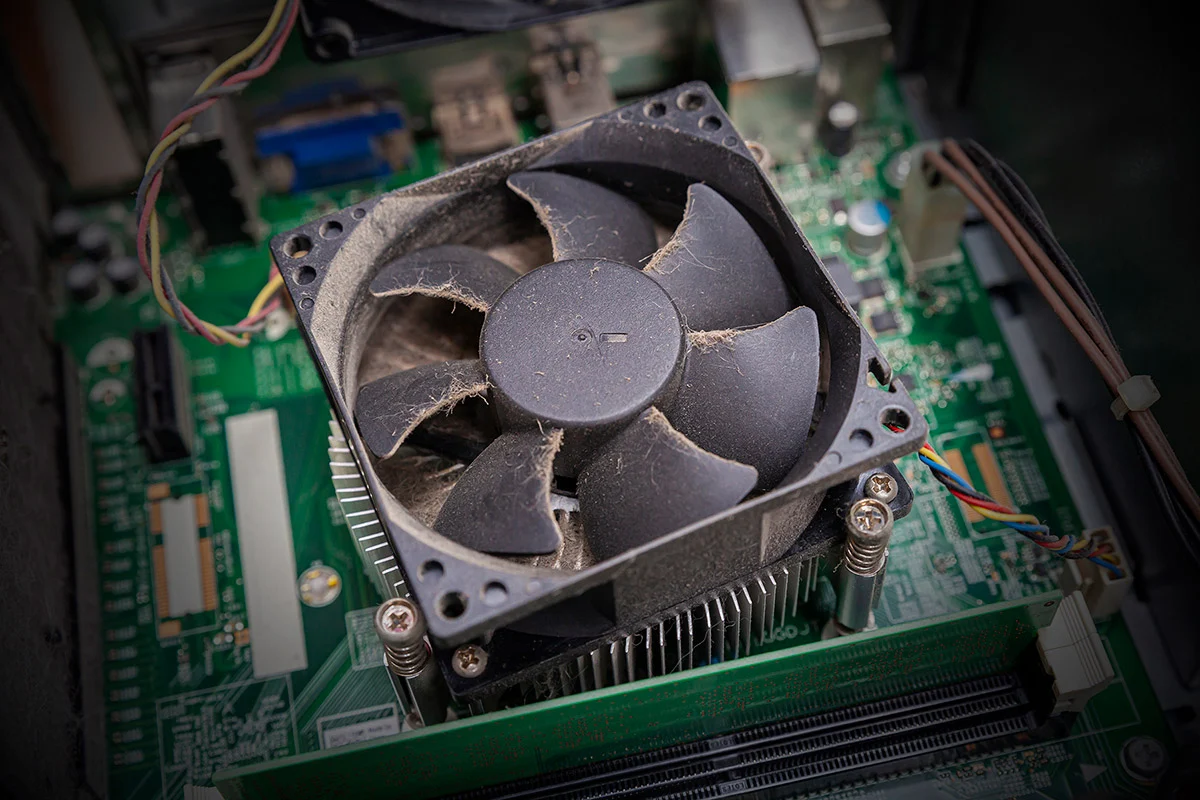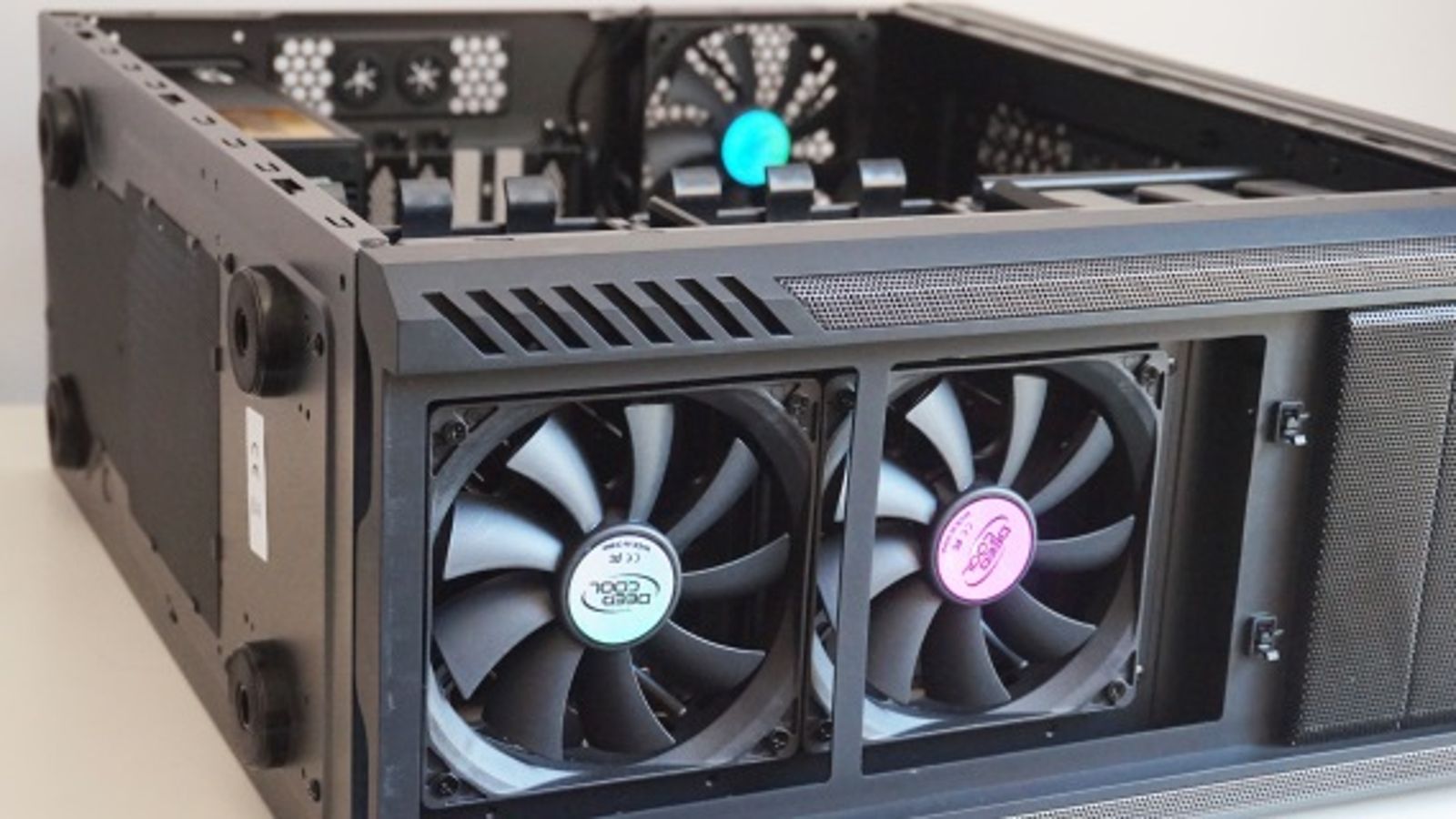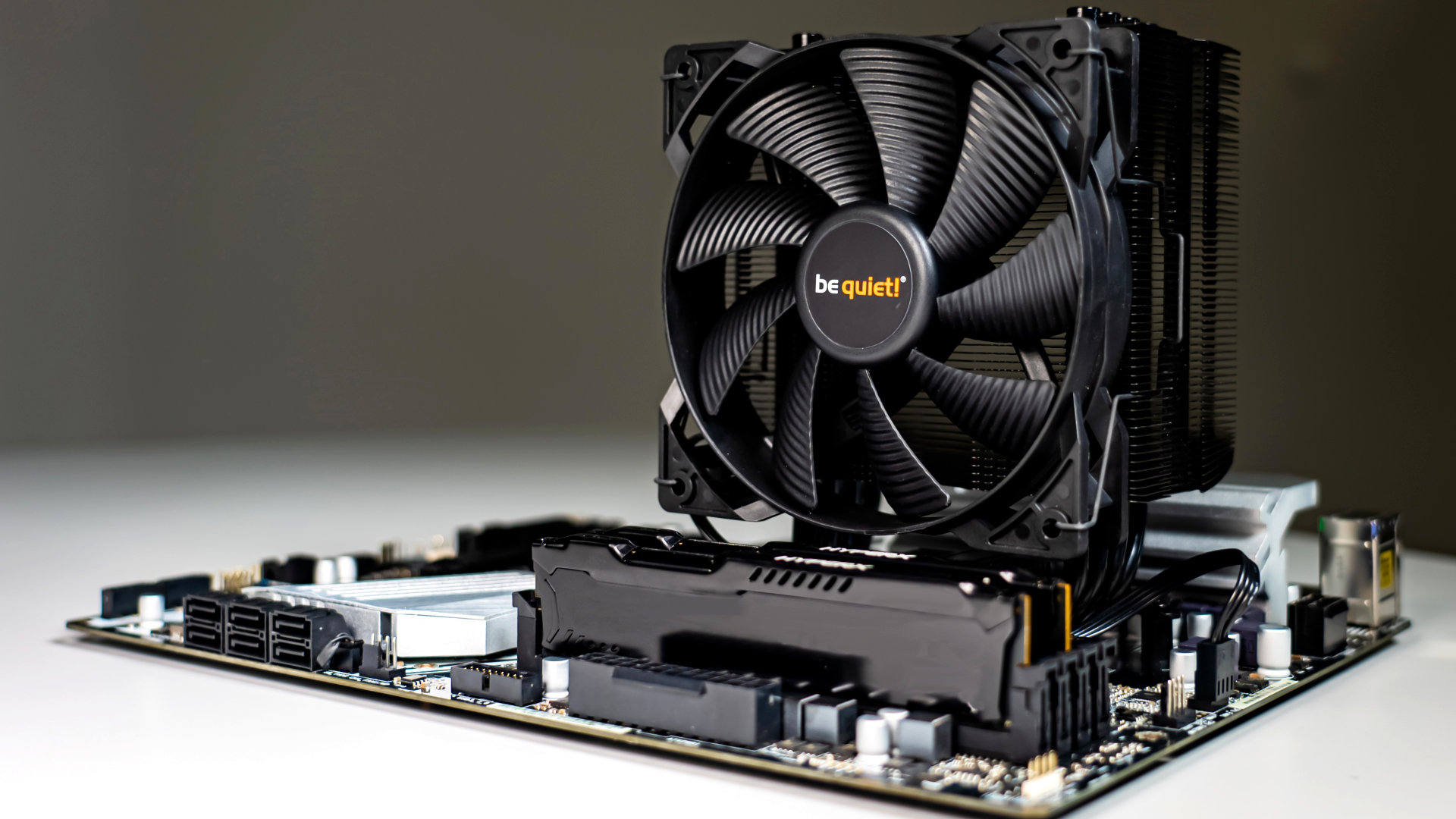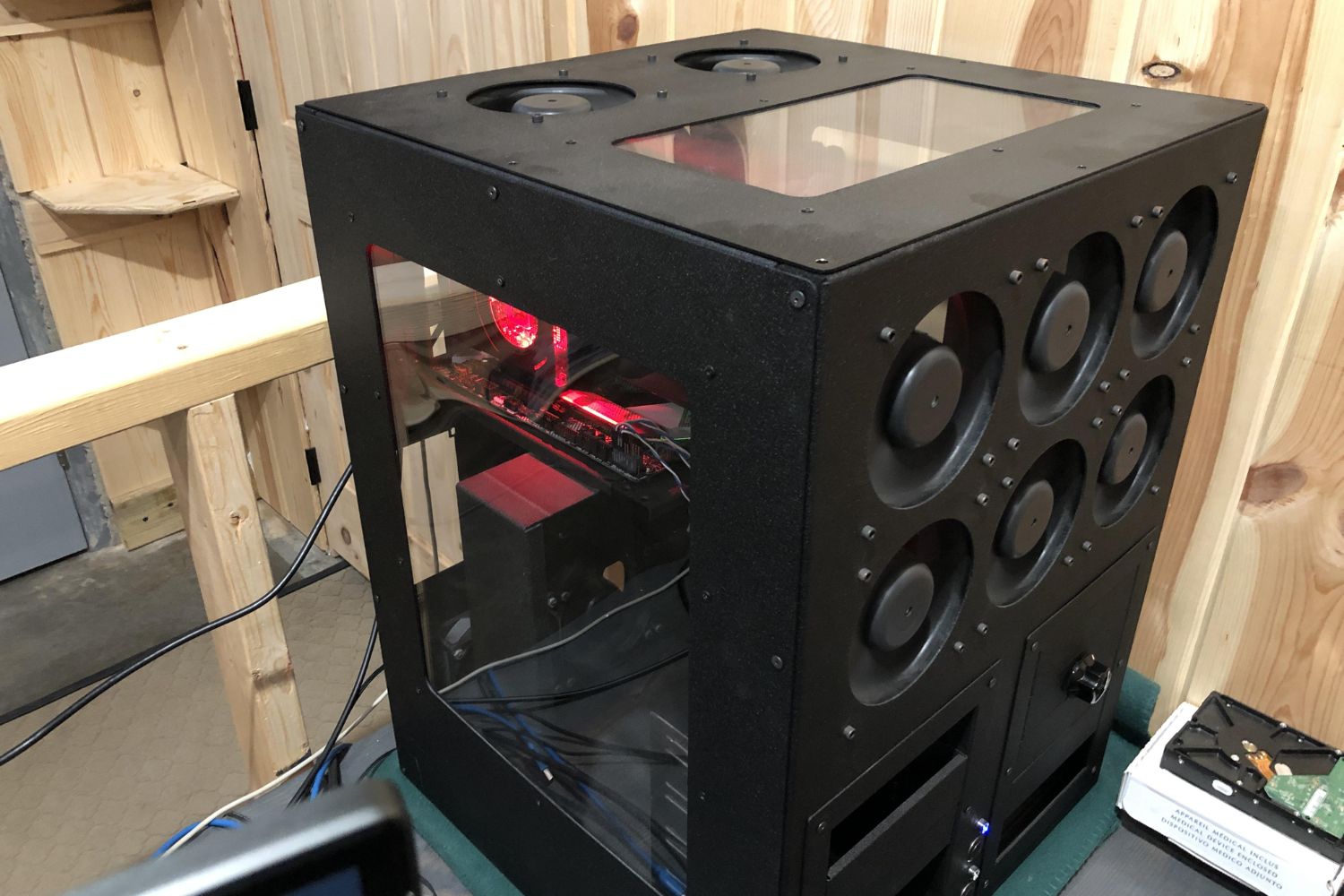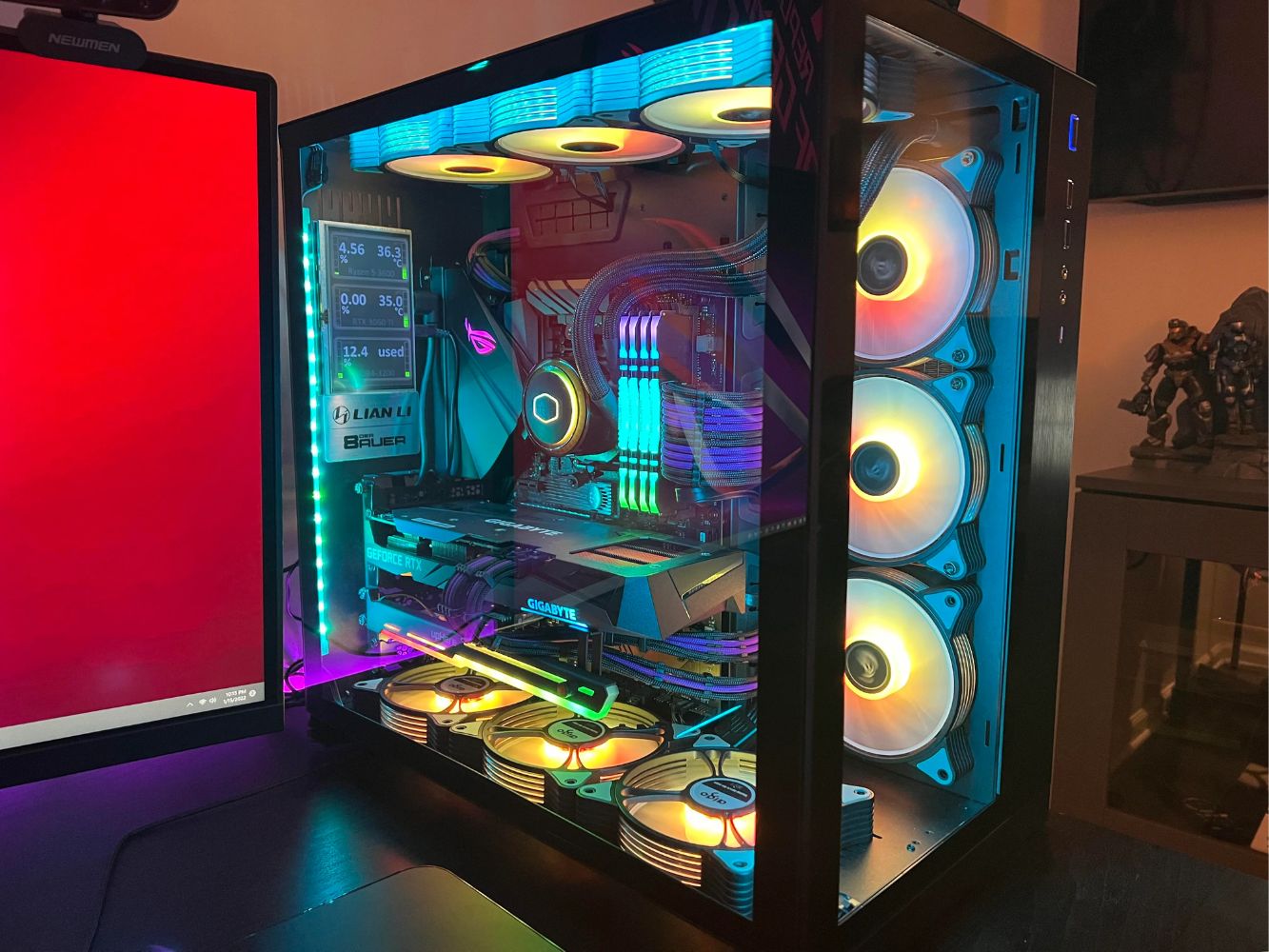Introduction
Keeping your PC monitor clean is crucial for optimal performance and visual clarity. Over time, dust, fingerprints, and smudges can accumulate on the screen, affecting the image quality and making it difficult to view content. Regularly cleaning your PC monitor not only helps to maintain its appearance but also ensures that you have a comfortable and enjoyable computing experience.
However, many people are unsure about the best methods for cleaning their PC monitors. Using the wrong cleaning products or techniques can potentially damage the screen or leave behind streaks and marks. In this article, we will guide you through the steps to effectively and safely clean your PC monitor.
Before we dive into the details, it’s important to mention that different types of monitors may require different cleaning approaches. Always refer to the manufacturer’s guidelines or user manual for specific cleaning instructions. Additionally, make sure to turn off and unplug your monitor before starting the cleaning process to avoid any potential electrical hazards.
Now, let’s explore the necessary tools and steps to effectively clean your PC monitor and restore its pristine condition!
Understanding the Importance of Cleaning Your PC Monitor
Regularly cleaning your PC monitor is essential for several reasons. Firstly, dust and debris that accumulate on the screen over time can significantly impact the quality of the display. These particles can create a layer of haze or blur, making it difficult to see images, text, or videos clearly. This can strain your eyes and affect your overall productivity and enjoyment when using the computer.
Moreover, fingerprints and smudges on the screen are not only unsightly but also contribute to a decrease in image sharpness and clarity. Whether you’re using your PC for work, gaming, or entertainment purposes, you want the visuals to be crisp and vibrant. Regular cleaning helps to remove these marks and restore the clarity of the screen, enhancing your viewing experience.
In addition to the visual aspect, keeping your PC monitor clean also helps to maintain its lifespan and performance. Dust and dirt particles can gradually accumulate inside the monitor, causing ventilation issues and potentially leading to overheating. Overheating can result in various problems, including screen flickering, color distortion, or even permanent damage to the components. By cleaning your monitor regularly, you can prevent such issues and ensure that it functions optimally for years to come.
Furthermore, a clean and well-maintained PC monitor reflects positively on your overall computer setup. It gives a sense of organization and cleanliness, making your workspace more inviting and professional. Whether you use your computer for personal or professional purposes, presenting a clean and polished setup can create a better first impression on clients, colleagues, or even family and friends.
Overall, understanding the importance of cleaning your PC monitor is crucial in order to maintain its visual quality, extend its lifespan, and create a comfortable working environment. With this understanding in mind, let’s proceed to the next section where we will outline the necessary tools for cleaning your monitor effectively.
Preparing the Necessary Tools
Before diving into the process of cleaning your PC monitor, it’s important to gather the necessary tools to ensure a thorough and safe cleaning experience. Having the right tools on hand will make the process easier and more effective. Here are the essential tools you’ll need:
- Microfiber cloth: A microfiber cloth is a must-have for cleaning your PC monitor. These soft, lint-free cloths are specifically designed for delicate surfaces like monitor screens. They are effective at removing dust, fingerprints, and smudges without scratching the screen.
- Clean, distilled water: Distilled water is the best option for cleaning your monitor as it doesn’t contain any minerals or impurities that could potentially leave residue or damage the screen. Avoid using tap water or other cleaning solutions, as they may leave streaks or scratches.
- Compressed air duster: A can of compressed air is handy for removing loose dust particles from hard-to-reach areas, such as the corners and edges of the monitor. It provides a quick and efficient way to blow away stubborn dust without touching the screen directly.
- Lint-free cloth: In addition to the microfiber cloth, having another lint-free cloth on hand can be helpful for drying the screen after cleaning or wiping away excess moisture.
- Cotton swabs: Cotton swabs or cotton buds can be used for cleaning tight spots and corners where dust or grime may accumulate. They allow for precise cleaning without any risk of scratching the screen.
Having these tools ready before starting the cleaning process will ensure that you have everything you need to effectively remove dust, fingerprints, and other debris from your PC monitor. Now that you have your tools prepared, let’s move on to the next section where we will discuss the necessary steps to clean your monitor safely.
Turning Off and Unplugging Your Monitor
Before you begin the actual cleaning process, it’s essential to turn off your PC monitor and unplug it from the power source. This step is crucial to ensure your safety and prevent any potential damage while cleaning. Here’s how to turn off and unplug your monitor:
- Save and close any open programs: Before turning off your monitor, make sure to save any ongoing work and close all open programs. This will prevent data loss and ensure a smooth transition when you power up your monitor again.
- Turn off the monitor: Locate the power button on your monitor and press it to turn off the display. The power button is typically located on the front or side of the monitor and may be labeled with a power icon.
- Unplug the power cable: Once the monitor is turned off, unplug the power cable from the electrical outlet to completely disconnect it from the power source. This step is crucial to avoid any electrical hazards while cleaning.
- Disconnect any other cables: Depending on your setup, you may also need to disconnect any other cables connected to your monitor, such as the HDMI or VGA cables. This will allow you to have full access to the monitor’s surface without any obstructions.
By turning off and unplugging your monitor, you eliminate the risk of electrical shock and protect both yourself and the monitor from any potential damage. This step also ensures that you have a clear and safe workspace to clean the screen effectively. Now, with your monitor safely powered down and unplugged, let’s move on to the next section where we will discuss the process of removing surface dust and debris from your monitor screen.
Removing Surface Dust and Debris
Before you begin the process of cleaning the screen, it’s important to remove any loose dust and debris from the surface of your PC monitor. This step will prevent these particles from scratching the screen while you clean. Follow these steps to effectively remove surface dust and debris:
- Use a compressed air duster: Gently use a can of compressed air to blow away any loose dust or debris from the monitor. Hold the can upright and use short bursts of air, keeping a distance of about 6-8 inches from the screen. Pay extra attention to the corners and edges, where dust tends to accumulate.
- Wipe the screen with a dry, lint-free cloth: After using the compressed air, gently wipe the screen with a dry, lint-free cloth. Start from the top and work your way down in a vertical motion. This will help to dislodge and remove any remaining dust particles. Avoid using excessive pressure or rubbing too vigorously, as this may damage the screen.
- Inspect for stubborn debris: Take a closer look at the screen to see if there are any visible stubborn debris, such as stuck food particles or dried residue. If you spot any, use a clean and dry cotton swab to gently dislodge and remove it. Be careful not to apply too much pressure or scratch the screen.
By following these steps, you can effectively remove surface dust and debris from your PC monitor. This will create a clean surface to work with and ensure that you achieve the best results when cleaning the screen itself. Now, let’s move on to the next section where we will discuss the process of cleaning the screen using a microfiber cloth.
Cleaning the Screen with a Microfiber Cloth
Now that you have removed the surface dust and debris from your PC monitor, it’s time to clean the screen itself using a microfiber cloth. This gentle yet effective cleaning method will help to remove smudges, fingerprints, and other marks from the screen without causing any damage. Follow these steps to clean your monitor screen:
- Dampen the microfiber cloth: Moisten the microfiber cloth with clean, distilled water. Avoid using excessive water, as too much moisture can drip into the monitor and cause damage. Make sure the cloth is damp, but not dripping wet.
- Gently wipe the screen: Starting from the top of the screen, gently wipe the cloth in a horizontal or vertical motion. Apply light pressure and use smooth, gentle strokes. Avoid pressing too hard or scrubbing vigorously, as this can lead to screen damage.
- Focus on smudges and fingerprints: If there are any stubborn smudges or fingerprints on the screen, give them some extra attention. Dampen a corner of the microfiber cloth slightly more and gently rub the affected area in a circular motion. Be patient and avoid applying excessive pressure.
- Dry the screen: After cleaning, use a dry section of the microfiber cloth to gently wipe away any remaining moisture from the screen. Again, use light pressure and smooth motions to avoid streaking or scratching the screen.
Using a microfiber cloth with distilled water is a safe and effective method for cleaning your PC monitor screen. The microfibers are designed to attract and trap dust particles and debris, while the distilled water ensures that no residues or streaks are left behind. Now that you’ve cleaned the screen, let’s proceed to the next section where we will discuss how to remove tough stains and smudges from your monitor.
Removing Tough Stains and Smudges
Despite your best efforts, there may be some stubborn stains or smudges that require extra attention when cleaning your PC monitor. These could be caused by grease, food particles, or other substances that have adhered to the screen. Here are some steps to help you remove tough stains and smudges:
- Create a cleaning solution: If plain water isn’t sufficient to remove the stubborn stains, you can create a gentle cleaning solution. Mix equal parts of distilled water and isopropyl alcohol in a small container. Dip a clean, lint-free cloth or cotton swab into the solution, making sure it’s not dripping wet.
- Target the stains directly: Apply the cleaning solution to the stained or smudged areas using the cloth or cotton swab. Gently rub the affected areas in a circular motion, being careful not to apply excessive pressure. Let the solution sit on the stains for a few moments to loosen them.
- Wipe away the stains: After allowing the cleaning solution to work, use a clean and dampened microfiber cloth to wipe away the stains. Start from the top and work your way down, using gentle movements. Rinse the cloth or switch to a fresh one if it becomes too dirty.
- Dry the screen: Finally, use a dry section of the microfiber cloth to remove any moisture from the screen. Ensure that the screen is completely dry to prevent streaking or water damage.
By following these steps and using a gentle cleaning solution, you can effectively remove tough stains and smudges from your PC monitor without causing any damage. Remember to be patient and gentle during this process, as excessive force can scratch or harm the screen. Now that you know how to tackle tough stains, let’s move on to the next section where we will discuss cleaning the monitor frame and edges.
Cleaning the Monitor Frame and Edges
When cleaning your PC monitor, it’s important to give attention not just to the screen, but also to the frame and edges. Dust, fingerprints, and grime can accumulate on these areas, affecting the overall appearance of your monitor. Here’s how you can effectively clean the monitor frame and edges:
- Turn off and unplug the monitor: Before cleaning the frame and edges, ensure that your monitor is turned off and unplugged to avoid any potential electrical hazards.
- Use a microfiber cloth: Take a clean, dry microfiber cloth and gently wipe down the monitor frame and edges. Start from the top and work your way down, paying attention to any visible dust or dirt. The microfiber cloth will help to pick up any loose particles without scratching the monitor’s surface.
- Clean tight spots with cotton swabs: For corners and other hard-to-reach areas, use a cotton swab lightly moistened with distilled water to remove any stubborn dirt or grime. Be careful not to apply excessive moisture or force that could damage the monitor.
- Remove smudges with a gentle cleaning solution: If you come across any smudges or sticky residue on the frame or edges, you can use a small amount of mild cleaner or a mixture of equal parts water and vinegar. Dampen a cloth or cotton swab with the solution and gently wipe the affected areas. Remember to dry the area thoroughly after cleaning.
- Wipe dry: Once you’ve cleaned the frame and edges, use a dry microfiber cloth to wipe away any moisture or cleaning solution residue. Ensure that all areas are completely dry to maintain a pristine appearance.
By following these steps, you can maintain a clean and polished look for your PC monitor by focusing not only on the screen but also on the frame and edges. Regularly cleaning the entire monitor helps to prevent dust buildup and keeps your workspace looking professional. With the frame and edges now clean, your monitor is ready to be used and admired once again.
As a final note, be sure to consult your monitor’s user manual for specific cleaning instructions or any recommendations provided by the manufacturer. Now that you’ve completed the cleaning process, you can enjoy a clear and vibrant display as you use your computer.
Conclusion
Cleaning your PC monitor is an essential task that should be carried out regularly to maintain its visual clarity and performance. Dust, smudges, and fingerprints can accumulate over time, impacting the overall viewing experience. By following the steps outlined in this article, you can effectively clean your monitor and restore its pristine condition.
Understanding the importance of cleaning your PC monitor is the first step. Regular cleaning not only improves the visual quality but also prolongs the lifespan of your monitor and enhances your overall computing experience. Preparing the necessary tools, including a microfiber cloth, distilled water, compressed air duster, and cotton swabs, ensures that you have everything you need for a thorough and safe cleaning process.
Remember to turn off and unplug your monitor before cleaning to ensure safety. Start by removing surface dust and debris using a compressed air duster and a lint-free cloth. Then, clean the screen itself using a microfiber cloth and distilled water. For stubborn stains or smudges, a gentle cleaning solution can be used. Don’t forget to clean the monitor frame and edges as well to maintain a polished appearance.
By following these steps and using the proper techniques, you can keep your PC monitor looking sharp and performing at its best. Remember to refer to your monitor’s user manual for specific cleaning instructions and recommendations.
With a clean and clear monitor, you can enjoy a comfortable working or entertainment experience, with vibrant visuals and reduced eye strain. So, take the time to clean your PC monitor regularly, and enjoy the benefits of a well-maintained and visually pleasing workstation.







